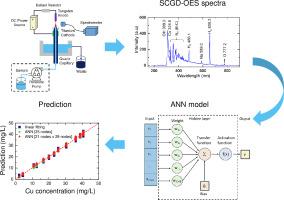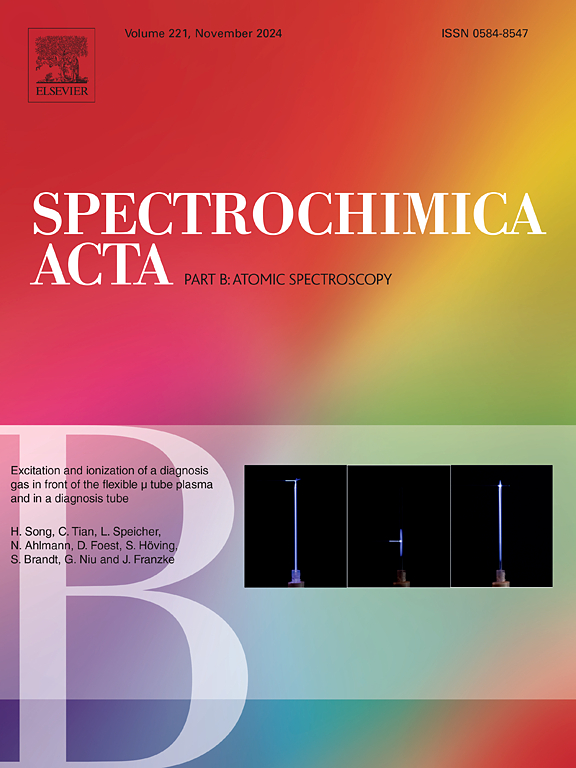Comparison of conventional linear regression method and interpretable artificial neural network for copper determination using optical emission spectroscopy of solution cathode glow discharge
Abstract
This study presents an investigation of solution cathode glow discharge (SCGD) - optical emission spectroscopy (OES) using an artificial neural network (ANN) for Cu determination. The glow discharge from the SCGD cell was generated to collect 3600 spectra of twelve Cu concentrations from 2.2 mg/L to 40.7 mg/L as the training/validation and testing dataset for two ANN models. Their performances were then compared with the conventional linear regression calibrated at the Cu emission line of 324.8 nm. The accuracy of the ANN models was improved from 3% to 5% in the second and the first ANN models, respectively, while their precision can enhance from 2% at a Cu concentration of 40.7 mg/L to 12% at a Cu concentration of 2.2 mg/L. The detection limit can be reduced from 1.2 mg/L by linear regression to 0.3 mg/L by ANN models. We also confirmed that the performance of ANN models is in agreement with inductively coupled plasma-optical emission spectroscopy (ICP-OES), with a difference of accuracy below 3% in tracking three different Cu concentrations. To interpret the ANN model, ANN ‘s weight characterization was analyzed, and its results show that ANN can recognize the critical emission lines that affect the prediction results and can separate the spectral line even in spectrum superposition. This demonstrated the ability of ANN in improving accuracy and precision to trace heavy metal using the SCGD-OES spectra.


 求助内容:
求助内容: 应助结果提醒方式:
应助结果提醒方式:


